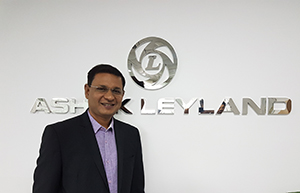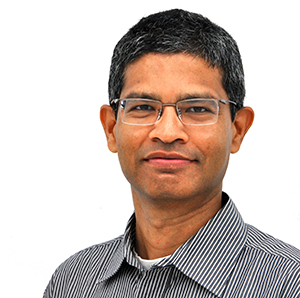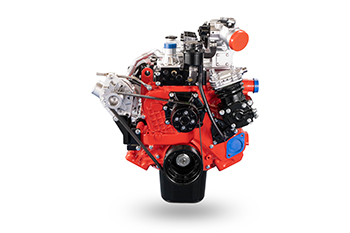Ashok Leyland Limited (AL), flagship of theHinduja Group, and the second largest commercial vehicle manufacturer in India,is a pure play on the M&HCV segment.
The company reported revenue of `8,744-crin Q4 FY2022 as against `7,000-crfor the same period last year. AL’s truck market share for Q4 FY2022 hasimproved to 30.6 per cent vis-a-vis 28.9 per cent in Q4 FY2021, making it the highestmarket share seen in the last 11 quarters.
And, despite the pandemic situation, Q4 MHCV andLCV exports at 4,173 nos. have grown by 32 per cent over Q4 last year (3,164nos.). On a full year basis, AL’s export volumes at 11,014 nos. is higher thanlast year (8,001 nos.) by 38 per cent.
This overall performance was backed by:
(1) Launch of new CNG models,
(2) Revival of dealerships in the North and Eastmarket, and
(3) Strong customer response for its AVTR rangeof products.
Also, AL was the leader in the bus segment,which is yet to revive post-Covid. The company expects the market share to improvefurther as new product launches will continue.
The successful AVTR range – India’s firstmodular truck platform – gives customers a choice to customize their truck asper their unique requirements. The platform has been delivering best-in-classtotal cost of ownership across segments, which has been widely appreciated bycustomers.
In a recent interaction with the media, DheerajHinduja, Executive Chairman, Ashok Leyland Limited said, “We have seen recoveryin Q4 FY’22 and the overall performance has been very good. The CV industry ison a recovery owing to the improvement in the macroeconomic environment andhealthy demand from the end-user industries. The MHCV segment is leading therecovery riding on the back of growth in core sectors such as construction andmining, agriculture, increased capital outlay for infrastructure projects andpent-up replacement demand. The performance of our BSVI products has been verygood and the introduction of CNG products has helped us regain our marketshare.”
The management remains positive on MHCV demandgoing ahead led by:
(1) Recovery in core economic sectors, such asConstruction and Mining, Steel, Cement, and Infrastructure spending, and
(2) Potential pick-up in the replacement demandfrom fleet operators on growing fleet utilization levels and improving freightrates.
The company is focusing on reducing itsdependence on the cyclical truck business by increasing the revenue share ofExports, Defence, Power Solutions, LCV, and the Parts business. AL is targetingmarket share gains in its LCV and ICV business with the launch of new products.
Moreover, it is focusing on enhancing CV exportsby introducing new products, network expansion, and increasing revenue fromreplacement by driving more digitization and network enhancement. The companyalso intends to increase traction in the Defence segment by capitalizing on thegovernment’s Atmanirbhar Bharat push.
According to market experts, Ashok Leyland remainswell-positioned to benefit from a strong recovery in the CV cycle and it wouldbe led by new product launches and a well-diversified product portfolio. WhileRaw Material cost pressures are likely to weigh on the margin in the near term,demand recovery, and gradual price increases are expected to drive improvementin the longer run. The company remains well-positioned to benefit from the cyclicalrecovery, especially in buses and higher tonnage trucks where it has a highermarket share.
The management plans to further ramp up thecompany’s export business by expanding its retail footprint. It continues to increaseits presence in overseas business by strengthening its distribution network inAfrica and the Middle East (local distributors appointed in these markets). Thefocus would be on the Retail market, considering that it already has a strongpresence in the Project market.
Similarly, it has laid the foundation in theMiddle East, whereas it has a strong presence in SAARC. Led by the expansion ofdistribution and introduction of multiple new products, exports are expected tobe a key growth driver going forward.
AL has recently launched two new CNG products inthe 14T and 16T segments (E-comet range) to address the rising CNG penetration(40 per cent of the ICV sales) in the ICV segment (segmental mix in MHCVindustry has also increased to 32-33 per cent from 20-22 per cent). Management indicatesthat lower operating costs of CNG vehicles (20-25 per cent) compared to dieselvariants is the key driver for the rising shift to CNG.
Ashok Leyland showcased the ‘CNG engine Hseries’ at the EXCON 2021. Based on strong leverage of Auto BS-VI enginedevelopment, the CNG engine H series (4 and 6 Cylinder) is designed for off-highway/CEVclients, and the management indicates that this product will be the first-of-its-kindin the CEV/mining and off-highway segment. The company will launch four moreCNG models across portfolios going ahead.
Further, AL has expanded its product range with threenew launches in the tipper (28T to 45T) and multi-axle segments to aid marketshare improvement in the MHCV segment. But, it is not just in the CV marketthat AL is making its mark felt. The company recently
DrN Saravanan, CTO, Ashok Leyland, and Rajesh R, Vice President – Defence and PSB, Ashok Leyland speak to Shashidhar V about the trends in the constructionequipment market and how Ashok Leyland in positioned to benefit from theincreasing demand for new technologies and innovations.
Howdo you see the market evolve here on?
RajeshR: If you see over the past three years, the construction equipmentindustry has seen a little slowdown. But, that is not primarily because of lackof opportunities but more so to the rising cost of fuel, the pandemic and thelockdown, and also the global shortage of the chips for the industry. Havingsaid that, I believe that this trend will not continue for long. The industryis going to bounce back. It is going to bounce back much stronger in the nextfew years, and this is going to take us to the next level of industrial growth,on both the infrastructure side as well as the transportation side.
Theindustry as a whole was faced with challenges of supply chain, high Raw Materialprices, etc. How has that impacted Ashok Leyland? And, how have you factoredthat in your overall pricing? And, do you see these factors dampening theenthusiasm going forward?
DrN Saravanan: See, you have two extreme cases where yourmaterial cost increased in the last few months, especially has been very steep.A lot of OEMs are struggling with the fact that we cannot pass on the entireincrease into the hands of the customer. There is, especially in the commercialvehicles sector, the coming of the perfect storm of not just Covid but you alsohad BSIV coming in that increased the cost for OEMs. And, then, you had thechip shortage.
Coming off from what was a very dampened marketin the CV sector, we are now entering what we believe is the growth phase, withnot just the new projects coming in but also the replacement cycle coming. So,how this demand continues or not depends on how the OEMs decide to pass on the costincrease. Each of the OEMs are keenly looking at who is passing on how much tothe customer.
So, it all depends on how each one of usactually managed the situation. It is a temporary situation because of theUkranian crisis, then it is manageable. However, if it a prolonged issue ofprice increase at this level, that will certainly be a challenge. At somepoint, OEMs will have to pass on certain amount of cost increase and that willprobably dampen the market sentiments a bit.
Again, it all depends on how strong the demandis at that point in time. We know of our own customers who have not yetreplaced the CVs that they should have done 3-4 years back. For them, itbecomes inevitable that they do it. It all boils down to how we react to thecost increase; how we manage costs internally, which is a major factor, and howmuch we pass on in comparison to how much our competition passes on. And, howstable is the demand.
So, there are multiple factors that need to beconsidered but we will have to tread this very carefully.
Wheredo you see the demand for Ashok Leyland coming from, post-pandemic?
RajeshR: Some projects have been put on hold, or the pace has slowed down.But, the re-phasing of those projects is taking shape even as we speak. And,this is pan-India. It is not only across certain segments but it is acrosssegments, be it roads, railways, airways.
And, every project that is happening in thecountry is an opportunity for the construction equipment industry, be it on thetransportation side or infrastructure development. So, the projects that havebeen put on hold or have slowed down, that is going to take the next phaseright now. And, that is where we see the demand coming in.
Wouldyou throw light on Ashok Leyland’s ‘go to’ market strategy for the Constructionindustry?
DrN Saravanan: We are one of the first, and one of the largestcompanies to have invested in innovative products, be it on the engine side,the development that we do on alternate fuels, etc. And, as Ashok Leyland, wehave a commonality of platforms on the range of engines that we do, which givesa lot of flexibility for the end customers to opt for different emission normsfrom the same platforms.
And, we launched alternate fuels in the recentlyheld EXCON exhibition. This is a CNG platform, which is already available inthe automotive segment. And, we are also migrating to the non-automotive side,right from a 4-ltr, 6-ltr, 8-ltr platforms.
So, these are the things why a customer wouldneed to choose Ashok Leyland, such as the commonality of the platform, theavailability of different options of the fuels, and, of course, the trusted,reliable network, as well as the aftermarket.
Howmuch has your network grown?
RajeshR: As we speak, we are roughly 150 touch points pan-India, and we expectto grow it by about 20-25 per cent in the next few years from now. And, this isexclusive to the construction equipment industry.
As a company and a division of power solutionsthat we represent, we have an exclusive sale and service network pan-India. Weare not dependent on the automotive part. This is completely done exclusivelyfor the power solutions business.
What this means to the end-customers is that heis looking at a commonality of platform, which means that the H-Series of engineshas got a range right from a 2-litre engine to a 6-litre engine. So, across theplatforms, across the emissions from BS-III to BS-IV to the next BS-V, and ofcourse on the CNG as well, the platform of engines is the same.
So, what it means is that the end customer orthe equipment manufacturer need not go for different alternate platforms or heneeds to modify the complete equipment when he want to migrate from oneemission norm to the next. I believe that this going to give us a lot ofleverage and we are already seeing the traction that is happening in the markettoday. And, more importantly, it is aided by a full-fledged aftermarket andservice network.
Hybridselling – which was initially adapted to the pandemic – is expected to be themost dominant sales strategy by 2024 due to shifts in customer preferences andremote-first engagement. As an organisation, have you too shifted to a morehybrid sales force? And, how have you benefited from it?
RajeshR: Hybrid selling is seen as a transformation in sales strategy processitself, post-pandemic. At Ashok Leyland, as part of our endeavour in digitaldriven organisation, various online tools have ably supported customer remoteengagement. Such tools are effectively used and have become part of our hybrid salesforce.
Howmuch of the new engine that you have launched at EXCON recently been an outcomeof the demand from the market?
RajeshR: We have always been industry first. We are a company that isindigenously developing the technology. We are investing on the engine R&D.And, being the first in the market, I don’t think the market is mature enoughto use a CNF or NG engine for the construction equipment industry. But, themigration that happened in the automotive side, it may not take that long forthe construction equipment market to adopt these new technologies, because thecost of fuel and also the reliability on the engines per se, the overall TCO isgoing to be the deciding factor for the end customer today.
Whatdoes the implementation of technology really mean for OEMs? Where do they needto focus on? And, how do they scale it up?
DrN Saravanan: You need to look at it from two perspectives.One, of course, is the regulation driven, which cannot be avoided. So, thetechnology gets driven by not just meeting the specified regulations butmeeting it robustly, meeting it smoothly, and at a low cost.
The other area is, as OEMs, we need to focus onwhat really makes sense to the customer. So, let us say, within the BSVIemission norms regulation, the customer is going to pay more for thetechnology. He doesn’t really care about it. So, how do I make sure his TCO is better?So, may be, I need to offer better performance, better fuel economy. So, from aTCO perspective, my BSVI engine should be better than my BSIV engine. So,innovation comes in every area.
So, for us, whatever makes sense in a customerperspective, whatever technology brings down his operating cost, what gives himthe uptime that he seeks, that is the technology that has my backing.
Afew years ago, cost and scale were the primary driving factors for OEMs. But,now almost everyone is talking about TCO and customer benefits. So, how do yousee the future panning out?
DrN Saravanan: As OEMs, we used to be homogenous. Almost allequipment had diesel engines. But, that is now getting fragmented. Now, you cansee the bus segment moving towards electrification. Some other vehicles areshifting towards CNG. Then, there is talk of hydrogen fuel cell coming in thelong range vehicles. So, what is happening is that no OEM will have scale whenthe market is getting fragmented into technologies.
And, so, the focus now shifts to how we canoffer customised vehicles, customised applications to the customer. So, thegame of the future is not about making customised 30,000 or 40,000 vehicles indiesel and selling them. Companies that can make 300, 400, 500 customisedvehicles will thrive.
Whatare the roadblocks that prevent you from a ‘pilot’ to a ‘rollout’?
DrN Saravanan: See, a lot of these technologies depend on theeco system. Is LNG technology available? Absolutely, it is available. Can it beimplemented? Yes. But, is there an eco system there? Not yet. SimilarlyHydrogen. Is Hydrogen Fuel Cell possible? Yes, in the next 2-3 years. But, willwe have the eco system? Not sure.
So, unlike diesel, where one part was stable(the availability of fuel is stable), the technology moving is possible. But,today, things are in a state of flux. The technology part is uncertain. How isthe transition going to happen? And, how will the eco system evolve? So, we arein a state of uncertainty presently.
Therehas been considerable increase in raw material prices, which has adverselyimpacted OEMs and their profitability. What is the lead time for raw materialprocurement?
RajeshR: That depends on the nature of the commodity. Post-pandemic, there hasbeen significant increase in transit time for ocean freight and importslead-time has almost doubled. Demand and supply gap of raw materials has alsoimposed longer delivery lead – in domestic, besides inflating costs.
So,what is the raw material inventory that you presently maintain?
RajeshR: We intend and carry inventory as per rolling demand forecast from themarket and the quantum of inventory will also depend on the fluctuations in themarket demand. However, we are committed to meet the delivery commitments forour customers.
Whatis the share of revenues from your aftermarket business? And, also from thereplacement market?
RajeshR: For Ashok Leyland it is around 10 per cent.
Lastly,on the future, how optimistic are you about the growth trend continuing? Whatare the key risks that could disrupt sentiments and affect your Y-o-Yprojections?
RajeshR: Thrust on infrastructure development projects, expansion ofindustrial activities, smart cities, and expansion, road lanes and railwaysdevelopment are expected to fuel positive growth trend in upcoming years.However, on-going rise in diesel fuel prices and customer perception on newemission engines could be the likely market disruptors.
Not limiting to increase in equipment cost forthe customers owing to stringent emission migration, market shift to completeelectronic engines shall restrain customer sentiment on cost of after-salesservices/ease of accessibility by service mechanics.
“As we speak, we are roughly 150 touch pointspan-India, and we expect to grow it by about 20-25 per cent in the next fewyears from now. And, this is exclusive to the construction equipment industry.”

RajeshR, Vice President – Defence and PSB, Ashok Leyland.
“The focus now shifts to how we can offercustomised vehicles, customised applications to the customer. So, the game ofthe future is not about making customised 30,000 or 40,000 vehicles in dieseland selling them. Companies that can make 300, 400, 500 customised vehicleswill thrive.”

DrN Saravanan, CTO, Ashok Leyland.
KeyRisks
-
Broad based recovery in M&HCV stillnot visible.
-
Volumes continue to remain subdued dueto an industry wide slowdown. A failure in pick up will weigh on the company’sfinancial performance.
-
Rising competitive intensity inM&HCV space.
-
Duopoly in the M&HCV space is underthreat from key competitors like Eicher and BharatBenz.
-
South has been a traditional strong holdfor AL and higher competition in other regions can impact volumes.
